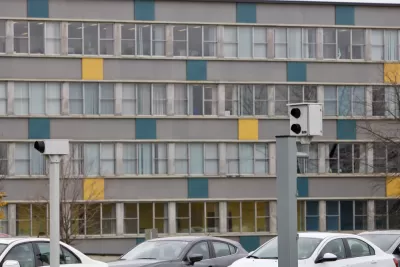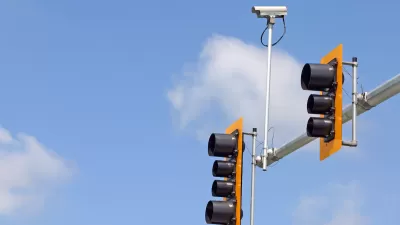Analysis of the automated enforcement program in Ottawa, Canada shows a significant drop in speeding near traffic cameras.

A recent study from Canada highlights the success of Ottawa’s automated traffic enforcement cameras, which, at one location near a school, quadrupled compliance with speed limits. Alistair Steele reports on the story for CBC News.
“Last month, the city announced plans to more than double the number of automated speed enforcement (ASE) cameras monitoring its roads in 2023 from 17 to 40, and to add up to 25 more annually until 2026, creating a web of ASE zones so vast that it could soon become difficult to drive from point A to point B in Ottawa without passing through at least one.” Rather than focusing on schools and parks, the new cameras will be located in “community safety zones” where speeding is a major problem.
In the United States, where traffic cameras are a contentious issue, more policymakers are recognizing their benefits. While proponents say the cameras can help limit interaction with police and improve road safety, critics caution that the programs can disproportionately impact people of color, in large part because low-income neighborhoods often lack safe infrastructure.
As Steele points out, Ottawa isn’t alone in its success with traffic cameras. “A systematic review published by the Cochrane Library in 2010 analyzed 35 separate studies from around the world and found average speeds in the vicinity of ASE cameras dropped by up to 15 per cent.” The same analysis also found a significant reduction in crashes, correlating with fewer injuries and deaths, near cameras.
FULL STORY: Here's the really annoying thing about speed cameras: They work

Planetizen Federal Action Tracker
A weekly monitor of how Trump’s orders and actions are impacting planners and planning in America.

Congressman Proposes Bill to Rename DC Metro “Trump Train”
The Make Autorail Great Again Act would withhold federal funding to the system until the Washington Metropolitan Area Transit Authority (WMATA), rebrands as the Washington Metropolitan Authority for Greater Access (WMAGA).

DARTSpace Platform Streamlines Dallas TOD Application Process
The Dallas transit agency hopes a shorter permitting timeline will boost transit-oriented development around rail stations.

San Francisco's School District Spent $105M To Build Affordable Housing for Teachers — And That's Just the Beginning
SFUSD joins a growing list of school districts using their land holdings to address housing affordability challenges faced by their own employees.

Car-Centric LA Suburb Looks to a Train-Oriented Future
City leaders in Rancho Cucamonga, the future western terminus of the Brightline West rail line to Las Vegas, want to reimagine the city as a transit-oriented, pedestrian-friendly community.

New Alaska Bitcoin Mine Would Burn as Much Energy as the State’s Largest Coal Plant
Fueled by “stranded” natural gas, the startup hopes to become the largest in the US, and to make Alaska an industry center.
Urban Design for Planners 1: Software Tools
This six-course series explores essential urban design concepts using open source software and equips planners with the tools they need to participate fully in the urban design process.
Planning for Universal Design
Learn the tools for implementing Universal Design in planning regulations.
Municipality of Princeton
Roanoke Valley-Alleghany Regional Commission
City of Mt Shasta
City of Camden Redevelopment Agency
City of Astoria
Transportation Research & Education Center (TREC) at Portland State University
US High Speed Rail Association
City of Camden Redevelopment Agency
Municipality of Princeton (NJ)





























